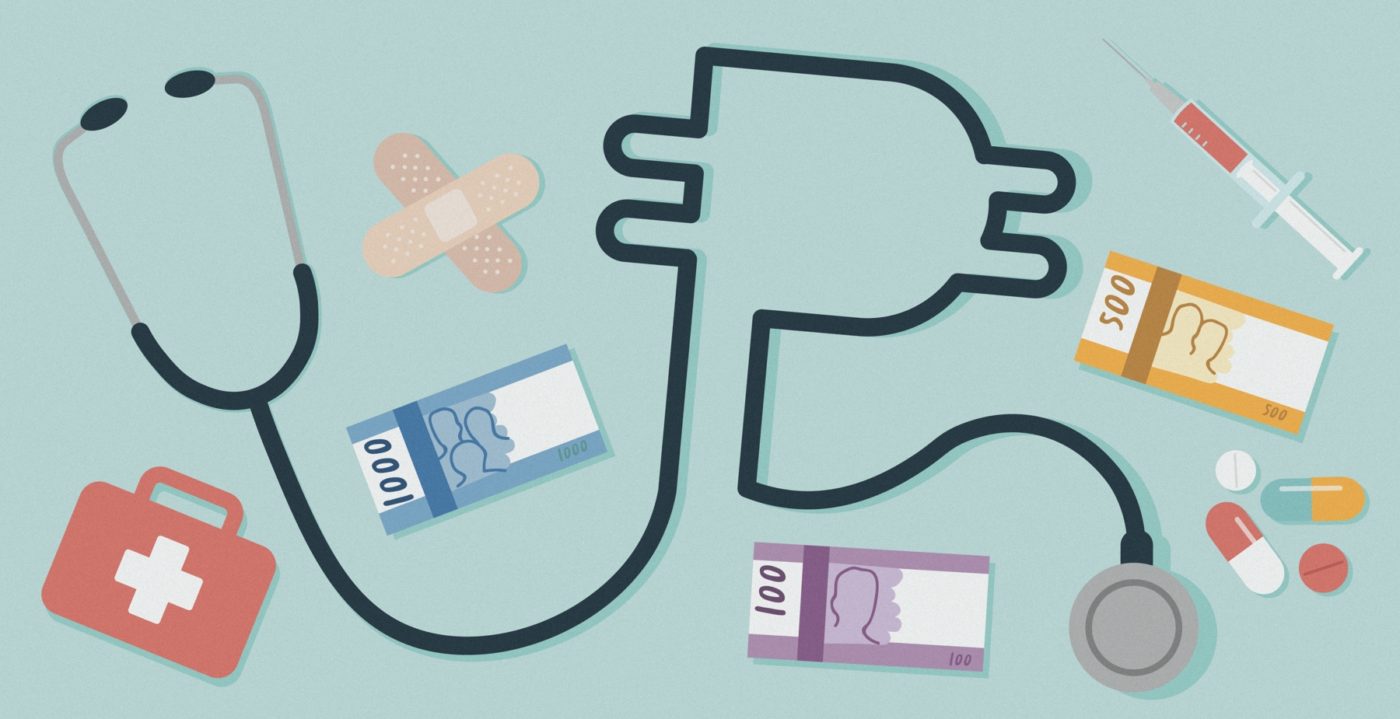FROM THE get-go, the Philippine Health Insurance Corporation (PhilHealth) was slated to become the most influential stakeholder in the Philippine healthcare system. National health reforms and agenda in the years succeeding its establishment in 1995 gradually expanded the agency’s responsibilities and power. For instance, former president and current House Speaker Gloria Macapagal Arroyo’s flagship health program gave Php 3 billion in funding to PhilHealth in line with a push for “universal health insurance coverage.”
During the Aquino administration, the trend was carried over with the passage of the Sin Tax Law of 2012, which funnels 85% of all revenues collected from excise taxes into PhilHealth.
At present, the institutionalization of PhilHealth as the mainstay of Philippine healthcare seems to be nearing completion. The recently signed Universal Health Care (UHC) Law effectively makes the agency the “national purchaser” of health goods and services.
Despite previous governments’ numerous initiatives to build up PhilHealth’s financial capacity, accessible and affordable healthcare remains an elusive dream for many Filipinos. In June, a PhilCare study reported that nearly 38% of Filipinos use their savings to cover medical expenses and around 25% have to borrow money from others.
For that reason, critics remain skeptical of the highly-touted piece of legislation, which would mandate the enrollment of all Filipinos into PhilHealth.
For the Health Alliance for Democracy (HEAD) Vice-Chair Dr. Gene Nisperos, the UHC does nothing more than reinforce the status quo, thus missing out on the real problems plaguing Philippine healthcare.
Out-of-pocket spending
In 2017, the Philippine Statistics Authority (PSA) reported an 8.8% increase in out-of-pocket (OOP) health expenditure—costs paid for by the patient and not by any insurance entity—that amounted to Php 372.8 billion. This is despite PhilHealth’s ever-increasing allocations in the national budget, pointing to a seeming inability to fully shoulder the rising costs of healthcare.
Effected in 2011, PhilHealth’s No Balance Billing (NBB) policy was designed to protect Filipinos from OOP expenses by prohibiting PhilHealth-accredited government hospitals from charging patients costs above what PhilHealth covers. However, sustained levels of OOP payments seem to suggest that compliance with the policy is not strictly supervised. In the first fiscal quarter of 2018, 22.81% of NBB-eligible patients still incurred OOP expenditures.
OOP expenses do not just stem from the failure to follow NBB—the policy does not cover all healthcare institutions in the first place. The NBB is only implemented in PhilHealth-accredited government hospitals, which comprised just 35% of all institutions in 2017.
Of the accredited institutions, 65% are either private clinics where NBB only applies to certain medical services or private hospitals that can opt out of the policy altogether.
Prioritizing private profit
Current Department of Health (DOH) records state that approximately 70% of hospitals in the country are privately owned, with 990 private hospitals in operation. In comparison, there are 463 government-funded hospitals.
“Private hospitals receive the biggest sum of reimbursements from PhilHealth,” said Dr. Nisperos, “which is troubling because the cost for health care in such institutions [is] so expensive.”
The National Demographic and Health Survey released in 2017 found that a patient’s average hospital bill at a private facility is almost three times more than the average hospital bill at a public institution. To illustrate, the mean total prices of healthcare at a private hospital versus a public hospital are Php 33,190.80 and Php 11,627.00, respectively.
Most healthcare facilities in the country are private institutions that bill their patients at significantly higher costs, casting doubt over the true affordability of healthcare. The current thrust to “corporatize” government hospitals compounds the matter.
DOH says the corporatization program is not a privatization of its hospitals per se, but rather a move that grants fiscal autonomy to its hospitals by allowing these to own properties in the interest of revenue generation. The project envisions that the income collected by public hospitals will subsequently be used for the improvement of facilities, the acquisition of medical equipment, and the like.
Independent think tank IBON Foundation argues otherwise. In the foundation’s book entitled Critical Condition: Privatized Health in the Philippines (2015), the ongoing campaign to corporatize government hospitals is described to have created mechanisms for “eventual private takeover,” such as financial performance, corporate boards, and investment plans.
Such privatization efforts could jeopardize indigent and middle-class access to healthcare services. When a government hospital is transformed into a corporation, it is likely to begin to behave like one—and for a corporation to be financially viable, it will have to require patients to pay, or otherwise, cater more to those who can.
This has already manifested in some government hospitals, such as the Quirino Memorial Medical Center and the Eastern Visayas Regional Medical Center, both of which have been accused of raising their prices for medical goods and services.
“A question may be asked as to why costs at private hospitals aren’t just regulated to avoid this,” says Dr. Nisperos. “The answer is very simple: The national government opts not to because they believe that competition would make the system self-regulating.”
The inverse relationship between competition and prices is fundamental in economics: As a particular market gets more crowded with competitors, each player would deliberately lower the costs of their goods and services to attract more consumers. “Obviously, that doesn’t happen here,” Nisperos asserted.
He perceived cost regulation as one of the pillars of an effective healthcare system alongside financing, service delivery, human resources, health information, and governance.
“In the Philippines, financing is where we are focused on,” he said, “but if you really want to solve the problem of healthcare, you have to focus on governance.”
He explained that if the local government is good, it should be spending 50-70% of its Internal Revenue Allotment on health.
“Data shows [we are only] spending 7-11%,” Nisperos stated.
Illustration by Andy Granda




